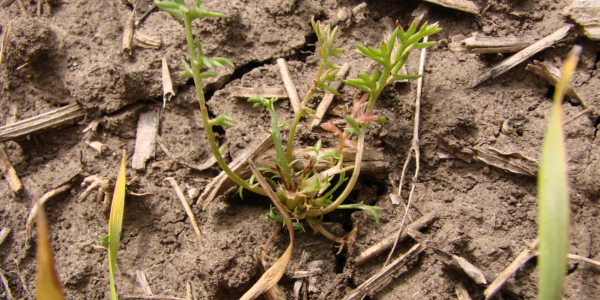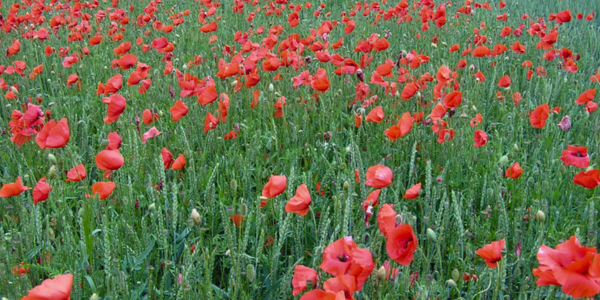|
United Kingdom - Managing herbicide resistance in broad-leaved weeds United Kingdom Herbicide resistance in broad-leaved weeds (BLW) is relatively rare when compared to resistance in grass weeds such as blackgrass or ryegrass, but incidence is on the increase and there is concern that it may now be found in further species. First identified in the year 2000, target site resistance to aceto-lactate synthase inhibitor herbicides (ALS) is most common in poppy, chickweed and mayweed. Triazinone-resistant groundsel populations have also been discovered in UK asparagus fields, but to date, ALS resistance in groundsel has not yet been identified. The problem remains confined mainly to the ALS herbicides, namely the sulfonylureas and the triazolopyrimidines. Both herbicide groups are extremely important for cereal broadleaf-weed control in the spring and together represent greater than 60% of the area treated. Currently, control of ALS resistant weeds is dependant on the continued availability of herbicides with alternative modes of action, such as fluroxypyr, MCPA, halauxifen and pendimethalin. However, there is always a risk that key active ingredients may be lost as products come up for regulatory renewal, making control of resistant populations more difficult, exacerbating the pressure on existing molecules. How does herbicide resistance develop? Herbicide resistance occurs naturally in the population, it is the inherited ability for a weed to survive a herbicide application that would normally control it. Surviving plants then pass on the genetic advantage to future generations, until resistant plants dominate the population, making weed control challenging. There is often no single factor in the development of resistance and a combination of factors may be at play. Repeated use of herbicides with a single mode of action across the rotation will encourage resistance development. Similarly, lack of tank-mixing with herbicides of an alternative mode of action may cause the same outcome. Failing to implement an effective rotation, monocropping and ignoring instances of poor weed control will also increase the likelihood of resistance. How do I spot the early signs of herbicide resistance? Early detection of resistance relies on keeping good farm records and observing and recording what happens in the field. Signs of herbicide resistance include:
Poor weed control is not always down to resistance though. Suboptimal use rates, targeting weeds that are too large or applying herbicides in very cold or dry conditions, will also affect the performance of a herbicide. This is especially true of Acetolactate synthase (ALS) inhibitor herbicides, which interfere with protein biosynthesis and require the target weed to be actively growing for maximum effectiveness. Other factors affecting herbicide performance include application conditions and increased leaf waxing, which may occur after prolonged cold periods resulting in the inability of the herbicide to penetrate the plant effectively. Common poppy resistance Mainly confined to the east of England, ALS resistant poppies have been identified in over 13 counties. Studies of these UK populations have confirmed that resistance is conferred by the target site mutations Pro-197-Leu and Pro-197-His. These populations can no longer be controlled by the sulfonylurea herbicides such as metsulfuron-methyl and tribenuron-methyl.
Chickweed resistance Resistant populations are more widespread than poppy, with over 50 ALS resistant populations identified across England, Scotland and Northern Ireland. It is believed that the high frequency of resistant chickweed in Scotland and Northern Ireland may be linked to continuous spring barley cropping and over-reliance on the sulfonyl-urea herbicides for broad-leaved weed control.
Scentless mayweed resistance Confirmed cases of resistant mayweed remain small in number and confined to two counties in England and Scotland. It is believed that incidences are under- reported currently. Analysis of the Scottish population confirmed that resistance was conferred by the Proline 197-Gln mutation. Clopyralid containing products such as Shield Pro™ will control resistant populations.
Top tips to avoid broadleaf-weed resistance and get the most out of your herbicides. Hugh Guinan, Field Technical Manager at Corteva Agrisciences, has this advice:
Insights and updates will be shared throughout the season. For further information, please contact our hotline on 0800 689 8899, e-mail: ukhotline@corteva.com or send us an enquiry using this online form.
More solutions from: Corteva Agriscience (United Kingdom) Website: https://www.corteva.co.uk/ Published: December 2, 2024 |






